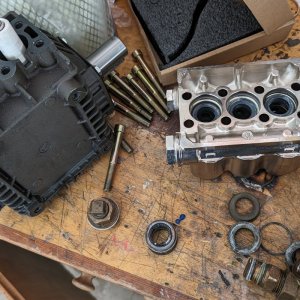truckmount girl
1800greenglides
I'm no engineer, but I maintain that lift is dynamic throughout the system and should not be measured at only the blower. In fact, it seems to me that lift and CFM readings are moot EXCEPT at the wand/carpet interface, because that is the only place it matters. The problem being there seems to be no accurate way to measure those figures at that crucial point. If we could find a way to test these forces just inside the lips of the wand, it would be ideal. Even at the wand handle would be better than at the machine.
There are a lot of people here more educated than I....and this industry has a lot of people who came from other industries....so I ask, what is the ideal instrument to get these figures at the crucial points?
Also can lift and cfm be dynamic at different areas of the system?
One more question, is the ratio of lift and cfm constant or can it be changed with restrictions? In other words if CFM is raised or dropped by 100, how much will that change the lift reading? If I then raise or lower the CFM by 200 or 500, will that lift ratio stay constant or will it be dynamic?
These are the kind of discussions Greenie and I have over morning coffee...sad huh?
Take care,
Lisa
There are a lot of people here more educated than I....and this industry has a lot of people who came from other industries....so I ask, what is the ideal instrument to get these figures at the crucial points?
Also can lift and cfm be dynamic at different areas of the system?
One more question, is the ratio of lift and cfm constant or can it be changed with restrictions? In other words if CFM is raised or dropped by 100, how much will that change the lift reading? If I then raise or lower the CFM by 200 or 500, will that lift ratio stay constant or will it be dynamic?
These are the kind of discussions Greenie and I have over morning coffee...sad huh?
Take care,
Lisa

